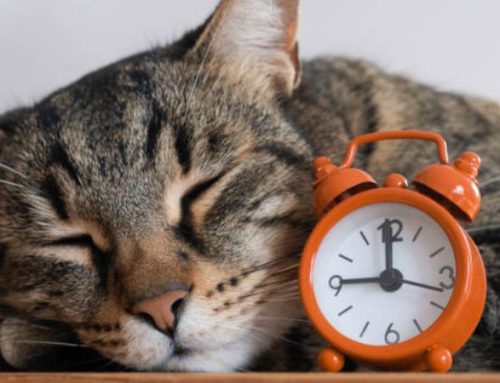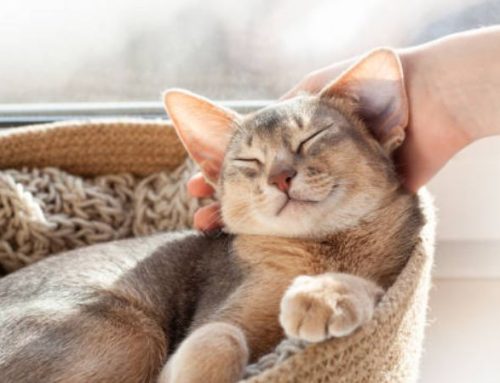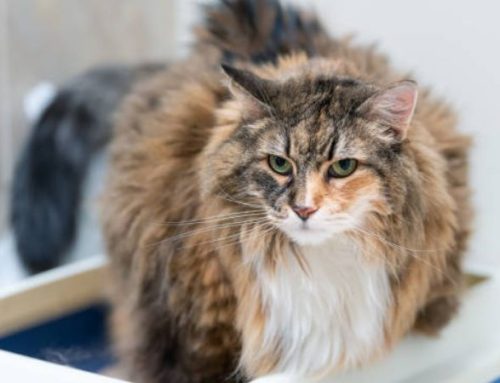If your cat has ever given you that frantic scratch-and-shake look, you know how quickly fleas can turn a cozy home into a tiny battleground. These pesky parasites don’t just irritate your feline they can also carry harmful diseases that threaten your pet’s health.
Fortunately, you don’t have to reach for harsh chemicals right away. With Nexus Pets as your guide, you can explore safe, natural home remedies to help keep fleas at bay and restore comfort to your cat’s life.
Physical Removal Methods
Even with natural remedies and chemical treatments, physically removing fleas remains one of the most reliable ways to manage a flea infestation. Two primary methods flea combing and gentle bathing allow pet parents to directly eliminate fleas while monitoring their cat’s comfort and skin health.
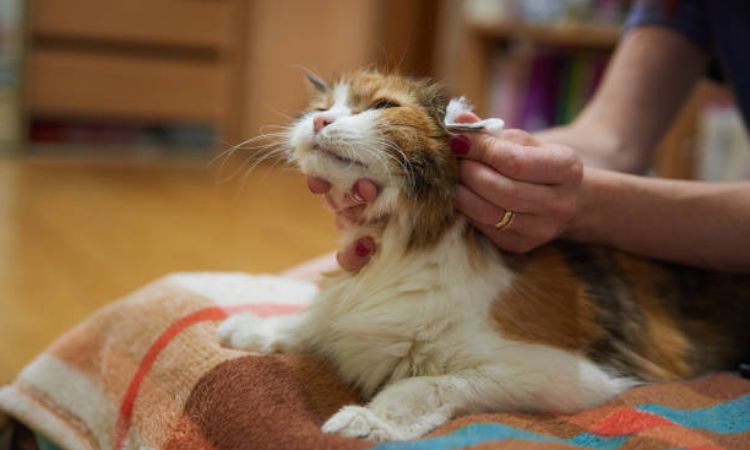
Flea Combing
Flea combing is a safe and effective method for catching both adult fleas and flea eggs directly from your cat’s fur. Use a fine-toothed flea comb, which is specifically designed to trap these tiny, fast-moving pests.
- Target Areas: Fleas tend to congregate in warm, protected regions. Focus your combing on the neck, along the back, at the base of the tail, and behind the ears. These areas are often the first to show signs of infestation.
- Removing and Killing Fleas: Keep a bowl of warm, soapy water nearby. Each time you comb out a flea, immediately dunk it into the water to kill it. Alternatively, you can place fleas on a folded paper towel and gently press to crush them, though soapy water is cleaner and prevents live fleas from jumping back onto your cat or around your home.
- Frequency and Patience: Flea combing is not a one-time fix. For effective results, comb your cat daily or every other day until you no longer find live fleas. Be patient—fleas reproduce quickly, so regular combing over several weeks is essential to fully break their life cycle.
Gentle Bathing
Bathing your cat with mild cat shampoo or a small amount of unscented dish soap can help wash away fleas from the fur and skin. Dish soap works by breaking down the flea’s exoskeleton, causing them to die, while cat-specific shampoos are formulated to be safe for your feline’s sensitive skin.
Proper Technique:
- Use lukewarm water and wet your cat’s fur thoroughly.
- Apply shampoo or dish soap gently, focusing on areas where fleas hide—neck, underarms, belly, and tail base.
- Work carefully to ensure fleas cannot escape into your home. Avoid splashing or vigorous scrubbing, which may frighten your cat and allow fleas to jump away.
Rinsing and Drying: After lathering, rinse thoroughly to remove all soap residue, which can irritate the skin if left behind. Dry your cat gently with a soft towel, and if your cat tolerates it, you can follow up with a flea comb to remove any remaining fleas or eggs.
Caution: Most cats are not fond of baths, and forcing them can lead to stress or injury. Approach bath time calmly, use minimal restraint, and consider enlisting help if needed. For cats that strongly resist water, flea combing alone may be safer and more effective.
Natural Flea Repellents
Here are some of the most effective natural options and how to use them safely around your feline friend.
Herbal Sachets and Sprays
Herbs like lavender, peppermint, and rosemary are known for their strong scents that naturally repel fleas. These herbs can be used to create homemade sachets or sprays that freshen up your home while discouraging fleas from lingering.
To make herbal sachets, fill small breathable fabric bags or pieces of cheesecloth with dried herbs. Tie them securely and place them near your cat’s bedding, favorite resting spots, or entryways—areas where fleas often gather.
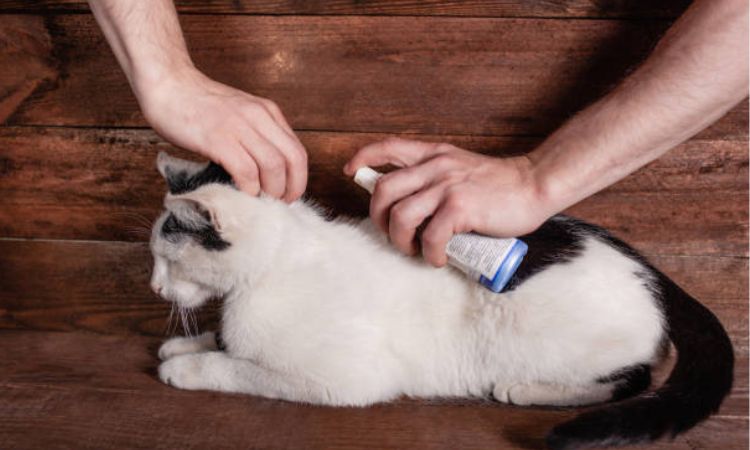
For a natural spray, boil a handful of dried herbs in water, let it steep until cool, then strain and pour the liquid into a spray bottle. Lightly mist areas where your cat sleeps or plays, but avoid direct spraying on your cat’s fur, especially if they have sensitive skin. Some essential oils derived from these herbs can be irritating or even toxic when overused, so it’s best to apply them around your home rather than directly on your pet.
Lemon Water Spray
Lemons contain citric acid, a natural compound that helps deter fleas. To create a simple lemon repellent, slice one lemon thinly and add it to a pot of boiling water. Allow it to steep overnight so the oils from the rind infuse the water.

The next day, strain the mixture and pour it into a spray bottle. Lightly mist your cat’s surroundings—such as bedding, carpets, and furniture—but be careful to avoid your cat’s eyes, nose, and mouth. While the scent may help repel fleas, lemon spray should not be applied directly to your cat’s skin, as it can cause dryness or irritation, especially in cats with sensitive coats.
Apple Cider Vinegar Solution
Apple cider vinegar (ACV) is another popular home remedy believed to make your cat’s skin less appealing to fleas. Although it doesn’t kill fleas, it can act as a mild repellent and help soothe minor skin discomfort.
To prepare, mix equal parts of apple cider vinegar and water in a spray bottle. Lightly spray your cat’s coat or use a soft cloth to wipe the mixture along their fur, avoiding open wounds or irritated areas. Always test on a small patch first to ensure your cat doesn’t react negatively, as some may be sensitive to vinegar.

You can also mist your home environment like bedding and rugs with the same diluted solution to help deter fleas from settling. However, since vinegar alone won’t eliminate an infestation, it should be used in conjunction with regular cleaning, vacuuming, and flea combing for best results.
Household Remedies
Salt Application
Salt is a common household ingredient that can help dehydrate flea eggs and larvae, making it a simple, low-cost remedy for mild infestations. Its coarse texture and moisture-absorbing properties help create an environment that’s less hospitable to fleas.
To use salt effectively, sprinkle a fine layer of table salt or sea salt evenly across your carpets, rugs, and pet bedding. Allow it to sit for 24 to 48 hours, giving it time to draw moisture from the fleas and their eggs. Afterward, vacuum thoroughly to remove both the salt and the dried flea remnants. Make sure to empty or replace your vacuum bag immediately after cleaning to prevent any surviving fleas from escaping.
For hardwood or tiled floors, you can make a gentle saltwater cleaning mix by dissolving a small amount of salt in warm water. Use a mop or soft cloth to clean these surfaces, which helps sanitize the area while removing lingering flea eggs or larvae. However, avoid excessive salt use on natural wood floors, as it may damage the finish or cause dryness.
Cleaning the Environment
Maintaining a clean environment is essential for breaking the flea life cycle. Fleas lay eggs that easily fall off your cat and settle into carpets, furniture, and bedding—so consistent cleaning is key.
Start by vacuuming regularly, focusing on carpets, upholstery, and baseboards where fleas tend to hide. Vacuuming not only removes adult fleas but also eliminates eggs, larvae, and pupae before they mature.
Next, wash all fabrics your cat frequently touches—such as bedding, blankets, and cushion covers—in hot, soapy water. The heat effectively kills flea eggs and larvae, ensuring they don’t hatch and re-infest your home. Dry everything on a high-heat setting for added effectiveness.
Don’t forget to clean your cat’s litter box frequently, as fleas are attracted to warm, humid environments. Replace litter often and wipe the box with mild soap and hot water before refilling it.
Safety Warnings
Avoid Essential Oils
While essential oils like tea tree, peppermint, eucalyptus, and citrus oils are often praised for their insect-repelling properties, they are extremely toxic to cats. Cats lack certain liver enzymes needed to metabolize compounds found in these oils, meaning toxins can quickly build up in their system. Even small amounts—whether inhaled, applied to the skin, or ingested through grooming—can lead to symptoms such as drooling, vomiting, tremors, or even liver failure.
Never apply essential oils directly to your cat’s skin or fur, and avoid using oil diffusers or sprays in areas where your cat eats, sleeps, or grooms. If you want to use herbal or plant-based repellents, opt for pet-safe formulas specifically designed for cats and approved by veterinarians.
Skip Baking Soda and Lavender
Despite popular online claims, baking soda and lavender should not be used directly on cats. Baking soda, when applied to fur or skin, can cause dryness, irritation, and even chemical burns if overused. Additionally, if ingested while your cat grooms itself, it may lead to gastrointestinal upset.
Similarly, lavender—especially in essential oil form—contains compounds that are mildly toxic to cats. Even though it may smell pleasant to humans, lavender oil can cause allergic reactions or poisoning in felines. Using lavender-scented sprays, shampoos, or diffusers around your cat is not recommended.
Always Test for Sensitivity
Before applying any natural or homemade flea remedy, it’s crucial to test it on a small patch of your cat’s skin first. Apply a small amount to a discreet area, such as the back of the neck, and observe for 24 hours. Watch for signs of irritation, redness, itching, or swelling. If any reaction occurs, wash the area with mild soap and water immediately and avoid further use.
Cats have delicate immune systems, and even mild ingredients can trigger allergies or sensitivities. Always consult your veterinarian before trying new remedies, especially if your cat has pre-existing skin issues, allergies, or other health conditions.
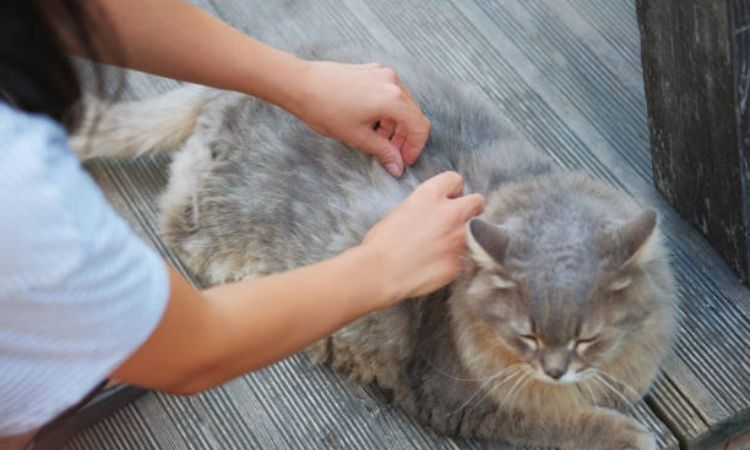
When to Seek Veterinary Advice
Persistent Scratching and Skin Irritation
If your cat continues to scratch, bite, or groom excessively despite using safe flea remedies, it’s a sign that the infestation may be more severe than it appears. Flea bites can trigger flea allergy dermatitis (FAD)—an allergic reaction to flea saliva that causes extreme itching, redness, and scabbing. A vet can prescribe anti-itch medication, steroids, or prescription flea treatments to break the itch-scratch cycle and allow your cat’s skin to heal.
Visible Flea Infestation or Flea Dirt
If you notice multiple fleas crawling through your cat’s fur or see black specks (known as flea dirt) on their skin, bedding, or furniture, it’s time to consult your veterinarian. Flea dirt is actually dried flea feces, which means fleas are actively feeding on your cat’s blood. Your vet can recommend a fast-acting flea medication to eliminate adult fleas and break their life cycle, as well as guide you on how to treat your home environment.
Signs of Anemia or Weakness
Severe flea infestations can lead to anemia, especially in kittens, senior cats, or cats with underlying health issues. Fleas feed on blood, and when large numbers are present, your cat can lose too much. Watch for symptoms like:
- Pale gums
- Lethargy or unusual tiredness
- Loss of appetite
- Rapid breathing or weakness
If you observe any of these signs, seek immediate veterinary care. Your vet may recommend blood tests, iron supplements, or supportive treatment to restore your cat’s health.
Presence of Tapeworms
Fleas can transmit tapeworms when your cat accidentally ingests them while grooming. You may notice small, rice-like segments around your cat’s anus or in their stool—these are tapeworm fragments. In such cases, your veterinarian will prescribe deworming medication and recommend strict flea control to prevent reinfection.
Home Remedies Aren’t Working
If you’ve tried multiple natural or over-the-counter flea remedies without success, or the fleas seem to return shortly after treatment, your vet can provide stronger prescription options tailored to your cat’s needs. These may include oral or topical flea preventives, environmental treatments, and advice on cleaning routines to ensure complete flea eradication.
Behavioral or Health Changes
Finally, if your cat becomes unusually withdrawn, anxious, or shows signs of illness—such as vomiting, diarrhea, or skin lesions—it’s time to call your vet. Flea infestations can cause not only physical discomfort but also stress and behavioral changes that impact your cat’s overall well-being.


